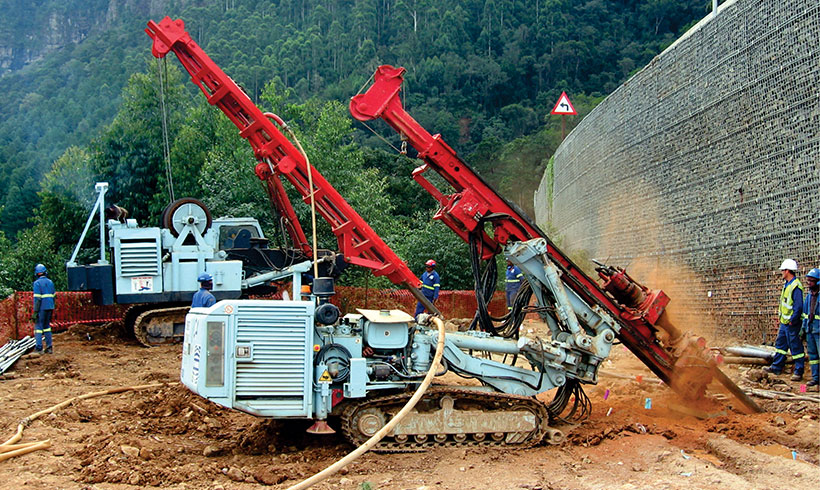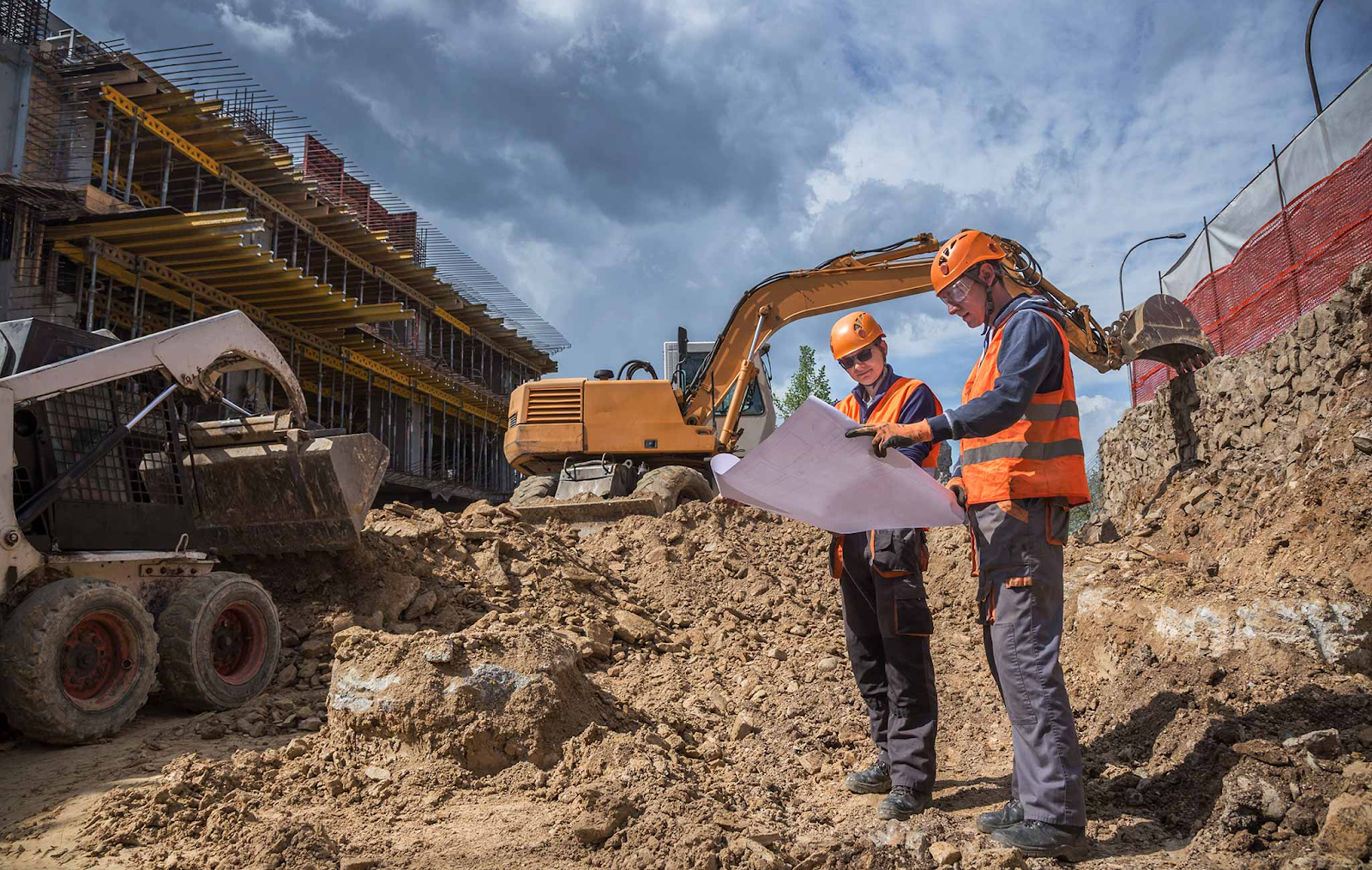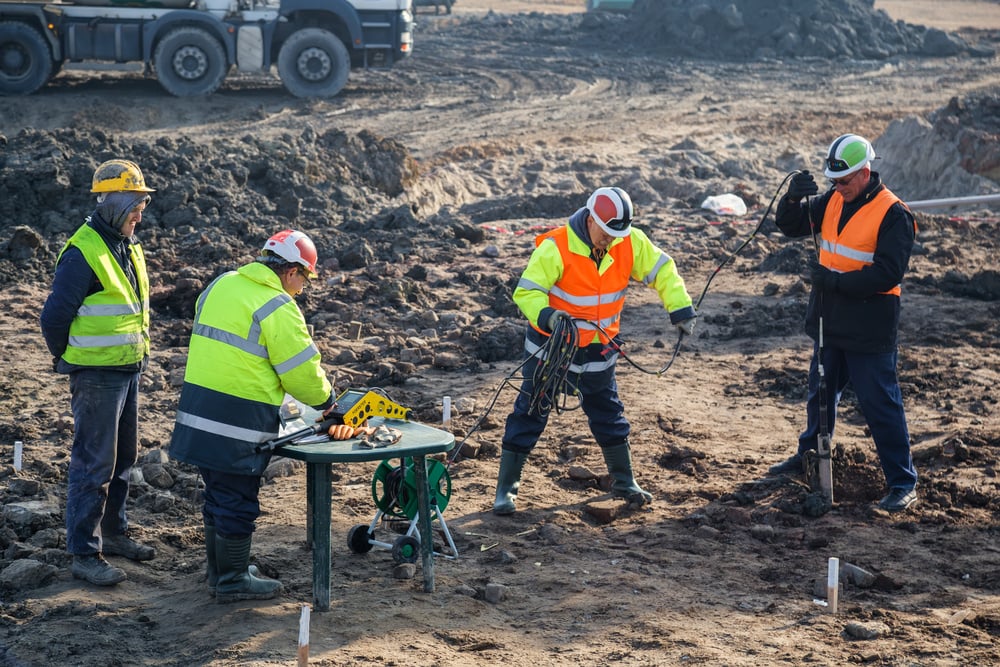The Main Principles Of Geotechnical Engineering For Construction Projects
Table of ContentsGeotechnical Engineering For Construction Projects - QuestionsFascination About Geotechnical Engineering For Construction ProjectsMore About Geotechnical Engineering For Construction ProjectsNot known Facts About Geotechnical Engineering For Construction ProjectsAn Unbiased View of Geotechnical Engineering For Construction Projects
Throughout the investigation, it is vital to pierce at the needed depth and the needed number of holes as per the suggestion of the Canadian Foundation Design standard. In some cases, the owner may save some Geotechnical Examination cost but end up investing greater than the prepared for throughout the construction price.The obligations of the geotechnical consultant include offering material testing for building and construction support. Geotechnical Engineering for Construction Projects. Geotechnical designers analyse all the area test records to guarantee that building is going on based on the project requirements. Throughout construction, a confirmatory examination for soil compaction is done on-site to make sure that no future negotiation takes place
After the concrete is put -7 days and 28 days- tests are performed on concrete examples collected from the site to guarantee that the concrete poured meets the design criterion. Asphalt core is taken after the Asphalt is laid and compressed to validate that it satisfies the design criterion. All lab test records are analysed by the Geotechnical Engineer to ensure that it satisfies the job spec.
Unknown Facts About Geotechnical Engineering For Construction Projects

Geotechnical engineering plays a crucial duty in making certain the stability of building and construction jobs. Geotechnical engineering is a crucial branch of civil design that concentrates on comprehending the practices of earth products, such as soil and rock.

For a dependable structure and a smooth building procedure, count on to provide the proficiency you need. Contact to obtain specialist advice and geotechnical solutions customized to your next job.
Geotechnical Engineering For Construction Projects - Truths
When starting a land development project, recognizing the ground beneath your feet is as vital as the frameworks you intend to construct over it. Our Geotechnical Engineering group analyse the ground, ensuring it appropriates for the suggested development while providing you with the info required to satisfy your project objectives.
Geotechnical Design takes a look at the formation of the ground, as it is the foundation for all jobs. Where structures need to be developed relative to the ground problems; ground conditions (e.g., soft ground) might require reinforcing depending upon the size of the designated framework. Prior to building, you need to learn about the groundwater, dirt framework, and liquefaction chance of your land.
For sites that are not connected on the local authority infrastructure additional website examinations would be required to provide technological inputs for on-site stormwater and wastewater. We have actually experienced Geotechnical Engineers based in each office, supporting your geotechnical requirements nationwide. Get to out to us to review exactly how we can support your following task.
These records are customized to meet the specific demands of a task and consist of layout parameters and guidance for the building of a variety of man-made frameworks. As providing working as a consultant services covering locations such as incline stability and load-bearing capabilities for various materials, these designers embark on research and advancement tasks to improve methodologies, tools, products knowledge and analysis covering entire lifecycles.
9 Easy Facts About Geotechnical Engineering For Construction Projects Described

Nevertheless, prices of pay my site generally boost as your expertise and abilities grow, with guidelines indicating a graduate starting salary of in between 18,000 and 28,000 per year in the UK. This rises to 26,000 to 36,000 with a couple of years of experience and afterwards reaching 40,000 to 60,000+ for senior, legal or master designers.
Nevertheless, with the best application it is feasible to master the profession and gain entrance to a challenging yet fulfilling and vital profession. A geologist would need to retrain to become a geotechnical engineer, although there is lots of cross-over between both professions, which could make this less complicated - Geotechnical Engineering for Construction Projects. Geologists require to have an understanding of soils, rocks and other products from a clinical perspective, while geotechnical engineers tale their knowledge of matters such as dirt and rock mechanic, geophysics and hydrology and use them to engineering and environmental tasks
When beginning, these designers will certainly tend to work with less complicated projects, accumulating understanding and experience prepared for even more challenging job later. Geotechnical designers have a tendency to be experts in details areas as they expand in experience, focusing on specific infrastructures such as railways, roadways or water. These engineers likewise deal with renewable power, offshore and onshore oil and gas, nuclear power, and more.
More About Geotechnical Engineering For Construction Projects
The time taken to end up being a geotechnical designer depends on where you are based, where you research and what level of education and learning you desire to achieve before getting in the office. Generally-speaking it takes 3-4 years to reach the fundamental demands to begin a job as a geotechnical engineer.
These operations allow professionals to analyze a host of soil mechanics including weight, porosity, void-to-solid particle proportion, leaks in the structure, compressibility, optimum shear toughness, birthing ability and contortions. If the framework needs a deep foundation, engineers will use a cone penetration test to estimate the quantity of skin and end bearing useful source resistance in the subsurface.
When examining an incline's balance of shear tension and shear strength, or wikipedia reference its capability to withstand and undergo activity, rotational slides and translational slides are typically taken into consideration. Rotational slides stop working along a curved surface, with translational slides occurring on a planar surface. A professional's objective is to determine the problems at which a slope failing can occur.
Typically, searchings for suggest that a site's dirt must be treated to improve its shear toughness, stiffness and leaks in the structure before layout and construction. When it comes time to outline foundation strategies, professionals are increasingly concentrated on sustainability, more especially just how to decrease a structure's carbon footprint. One technique has been to change 20 percent of a structure's cement with fly ash, a waste item from coal fire nuclear power plant.